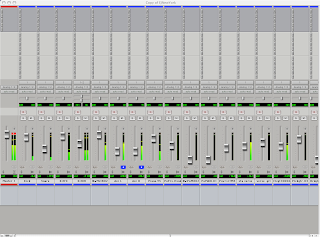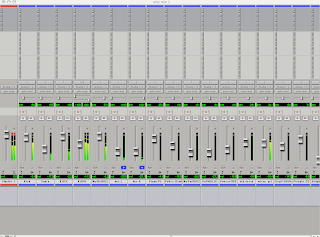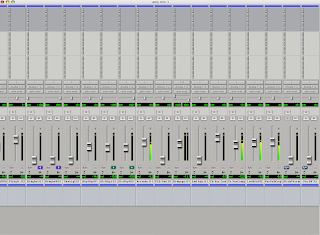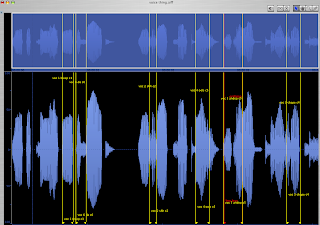The lecture showed us how to basically go about it *(1), and then we just had to do three different mixes of an Eskimo Joe song, "New York".*(2) The first mix was to be a basic mix, with the only thing done is using the faders in the mix window. For this I decided to make the bass guitar and piano extra loud, and the vocal that sung the bridge loud. Some of the parts I didn't include because it was simply too much and I felt it was a little cluttered. I prefered it with less instruments, but those instruments being fully appreciated.

The second mix I put panning in. I tried to do what Steve said in the lecture and make it so the instruments aren't all cluttered in the middle. I put the drums to the left and the guitars to the right. The three verse vocals I split up, with the lowest to the right, the highest to the left and the mid-range, more important voice centred. I thought it gave it a more open sound, which I liked.


The final mix was putting in the EQ. This was the best par, because I haven't actually used the EQ before, and I found it really interesting to try and do different things. I made the bass mroe bass-y, and the piano more bright. I thought the drums were a little dull, but couldn't work out how to fix it. Changing things ere just knocking other important parts of the drums. Also, I made the bridge vocals really bright so it really stood out. It's meant to sound really obviously tampered with, so that's why it does. Personally, I like in songs when the vocals are warped to the point it sounds like they're coming through the radio or some such. So that's what I attempted to do, by raising the higher frequencies and lowering the lower ones.
MY FINAL MIXES:
MIX 1: ONLY FADERS
MIX 2: FADERS AND PANNING
MIX 3: FINAL PRODUCT - FADERS, PANNING AND EQ
-------------------------------------------------------------------------
*(1) Steve Fieldhouse, Audio Arts Lecture, EMU, Tuesday 22nd May, 2007
*(2) Eskimo Joe. 2006. “New York” Black Fingernails, Red Wine (album). Mushroom Records





